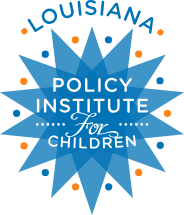Nearly 10,000 independent child care businesses across the state employ over 15,000 employees and support tens of thousands of additional employees across all industries by providing early education to their young children. Yet, in 2024, Louisiana’s child care landscape continues to face significant challenges. While the need for child care remains high — more than 7,000 children on the Child Care Assistance Program waitlist and nearly 100,000 in-need but unserved birth to 3-year-olds — resources struggle to meet the demand. These challenges come amidst ongoing economic pressures, including persistent inflation and the rising costs of doing business, such as increased insurance premiums and workforce competition for qualified early educators.
Rising industry costs, coupled with decreased state and federal investment, have a multiplier effect. Providers are forced to increase tuition costs to offset increasing operation costs, and the Child Care Assistance Program (CCAP) cannot enroll eligible families. These realities leave empty seats in child care centers and unrealized talent in our economy as working parents struggle to find and afford the high costs of early childhood education programs.
With the majority of children under 5-years-old in Louisiana having all available parents in the workforce, one of the state’s essential economic drivers is the child care sector, as it supports and sustains numerous other industries. The lack of sustainable and substantial investments in early childhood education programs leaves working Louisiana families in a precarious position — they struggle to access and afford the high-quality child care they need to participate in the workforce, and that their children need for a strong start to life.
Summary Of Survey Findings
In this year’s survey, most responding parents:
- Worked or attended school full-time outside the home.
- Relied on child care for at least 30 hours a week to work or attend school.
- Stated they would not be able to work without consistent child care.
- Paid for child care independently without any form of public subsidy (e.g. CCAP).
- Worried about their family’s ability to afford basic needs and the cost of child care.
- Had lost time at work in the last three months because of a child care disruption.
Child care costs continue to be a significant concern and burden for parents.
- On average, parents reported spending $633 per child per month on child care or $7,600 per year. For a family with two children in care, that translates to more than $15,000 per year.
- For families paying for child care and not receiving any form of subsidized care report their average cost per child was $1,183 a month for child care, or more than $14,000 per year. For a family with two children in child care, that translates to more than $28,000 per year.
- A majority of families worried about being able to afford essential costs, including child care, along with housing and utilities.
- One-third of respondents who did not receive any form of subsidized care were dissatisfied with the cost of their current child care arrangement.
- Child care is a burdensome expense for families. A majority of parents making $150,000 or less per year said they were worried about being able to afford the cost of child care.

